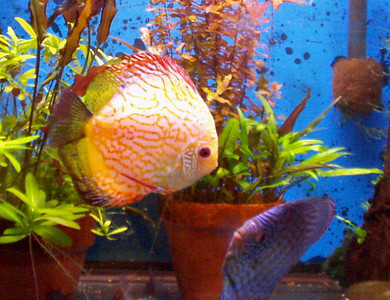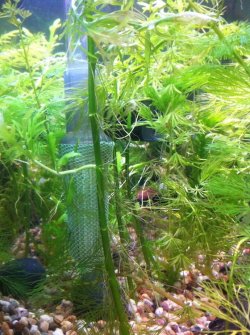All sponges are not equal. Think porosity-
porous
adjective:
(of a rock or other material) having minute spaces or holes through which liquid or air may pass.
synonyms:
permeable,
penetrable,
pervious,
cellular, holey;
The smaller the holes/spaces, the more area it creates. So think of any sponge as potentially ranging from very coarse, i.e. with fewer but larger holes/space to very fine, i.e. having many many very small holes/spaces. Depending on how we need to use a sponge in regards to filtration determines which type we may want.
If the primary use for the sponge is to host bacteria, then fine pores will provide the mot surface area for the bacteria to colonize. But there is a downside to a fine pored sponge. The water passing through can contain solid wastes and these can become more easily trapped in the fine pores which blocks the flow. And blocking the flow means the bacteria do not get what they need. So it becomes important when using a fine pored sponge to work to have the cleanest water entering it in order to reduce clogging. The bigger any piece of solid waste might be, the easier it will cause clogs. So one should try to filter out solids before the water reaches the sponge.
A coarse sponge would be ideal for this. because it has fewer but larger holes.spaces, it can trap wastes and maintain its ability to pass water though for some. This design is ideal for trapping wastes and the sponge is intended to fill up and then be rinsed. If iy is not rinse it too will clog.
Now consider using a sponge as a pre-filter. Its job is ti catch the solid wastes before they enter the filter. But if you use a finer pored sponge for this it will clog pretty quickly. This is a big problem for two reasons. First, as you have discovered, a clogged pre-filter stops flow on the intake side. This is one of the worst things one can have happen is for intakes to become clogged. This can cause damage to the motor and is why when we need to restrict the flow we do it on the output side not the intake.
The upshot of all this is that two things become important when using pre-filters. The first is to select a coarser type sponge to use, one that wont clog as fast. However, no sponge doesn't clog, so the second thing is that it is essential to rinse them out weekly, before they start to restrict intake flow in a bad way. What you experienced was having your intake sponge be to fine so that it clogs to full blockage easily. Your solution is the find a coarser pored sponge to go over your intake.
Since I have about 30 odd filters with intake sponges as pre-filters, I can suggest the following.
ATI makes a line of very nice and very versatile pre-filter kits which come with a variety of adapters which allow it to fit on many filter intakes. I uses these on canisters and with power heads. You can see the 3 different size models here. (I use the #3).
http /www.kensfish.com/aquarium-supplies/aquarium-filters/ati-pond-pre-filters.html
/www.kensfish.com/aquarium-supplies/aquarium-filters/ati-pond-pre-filters.html
AquaClear filter sponges also work. However it matters which one you use. AquaClear filterr range from 100 to 500 gph. The sponges that fit them become more and more coarse as you go up in model in terms of flow rate. I suggest the foam for the 300 (model 70) or the most coarse from the 500 (model 110) make excellent prefilters and can be cut and shaped to size.
I tend to cut a rectangle and then use a scissors to cut down the middle of one end most, but not all the way, through. I then rotate the scissors 90 degrees and cut down again. (Cut an X into the sponge.) This allows one to push an intake tube into the "hole." Once the sponge is on the intake you can trim it to shape. Below is a picture of the result in one of my tanks.

 /www.kensfish.com/aquarium-supplies/aquarium-filters/ati-pond-pre-filters.html
/www.kensfish.com/aquarium-supplies/aquarium-filters/ati-pond-pre-filters.html

